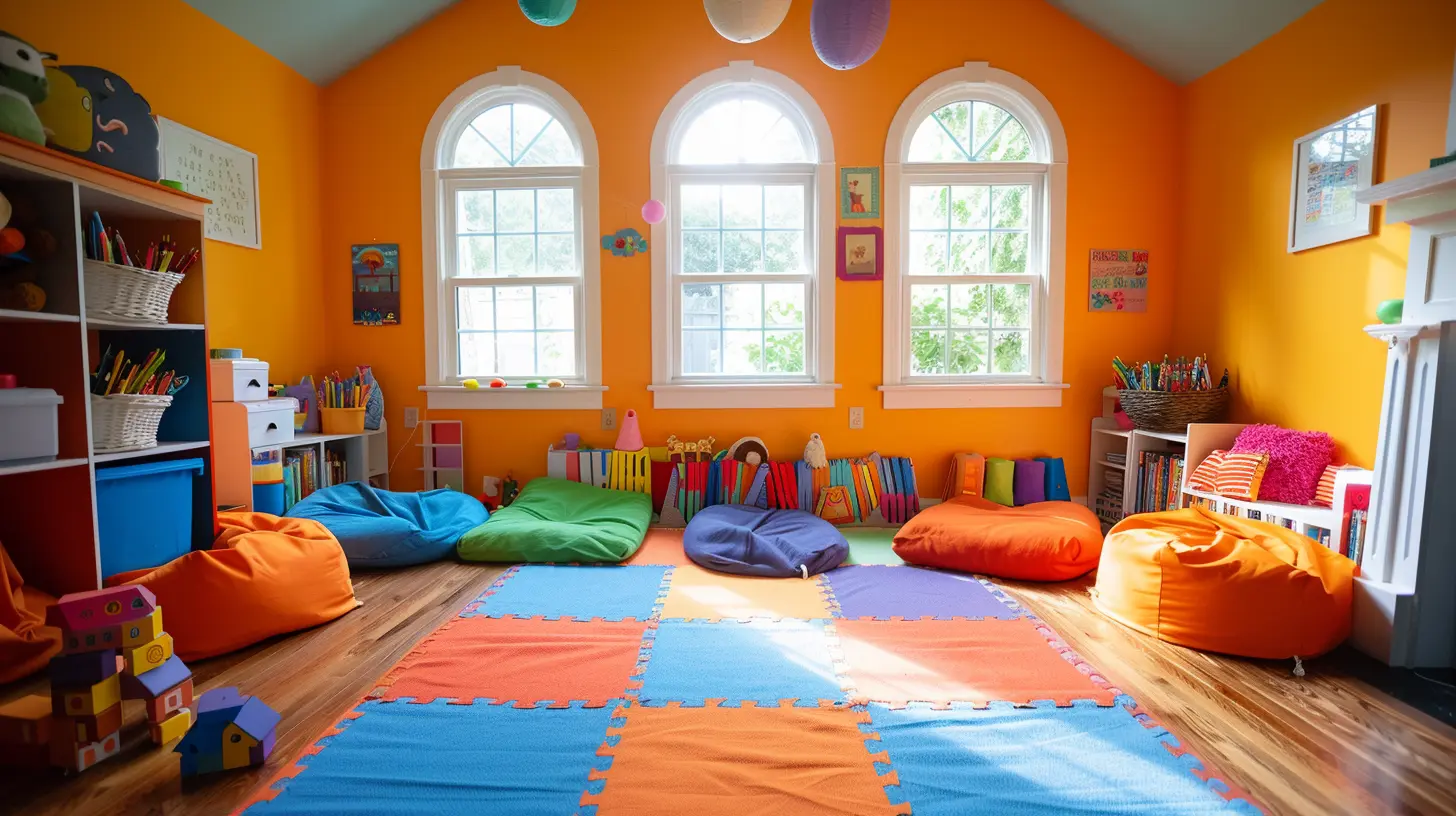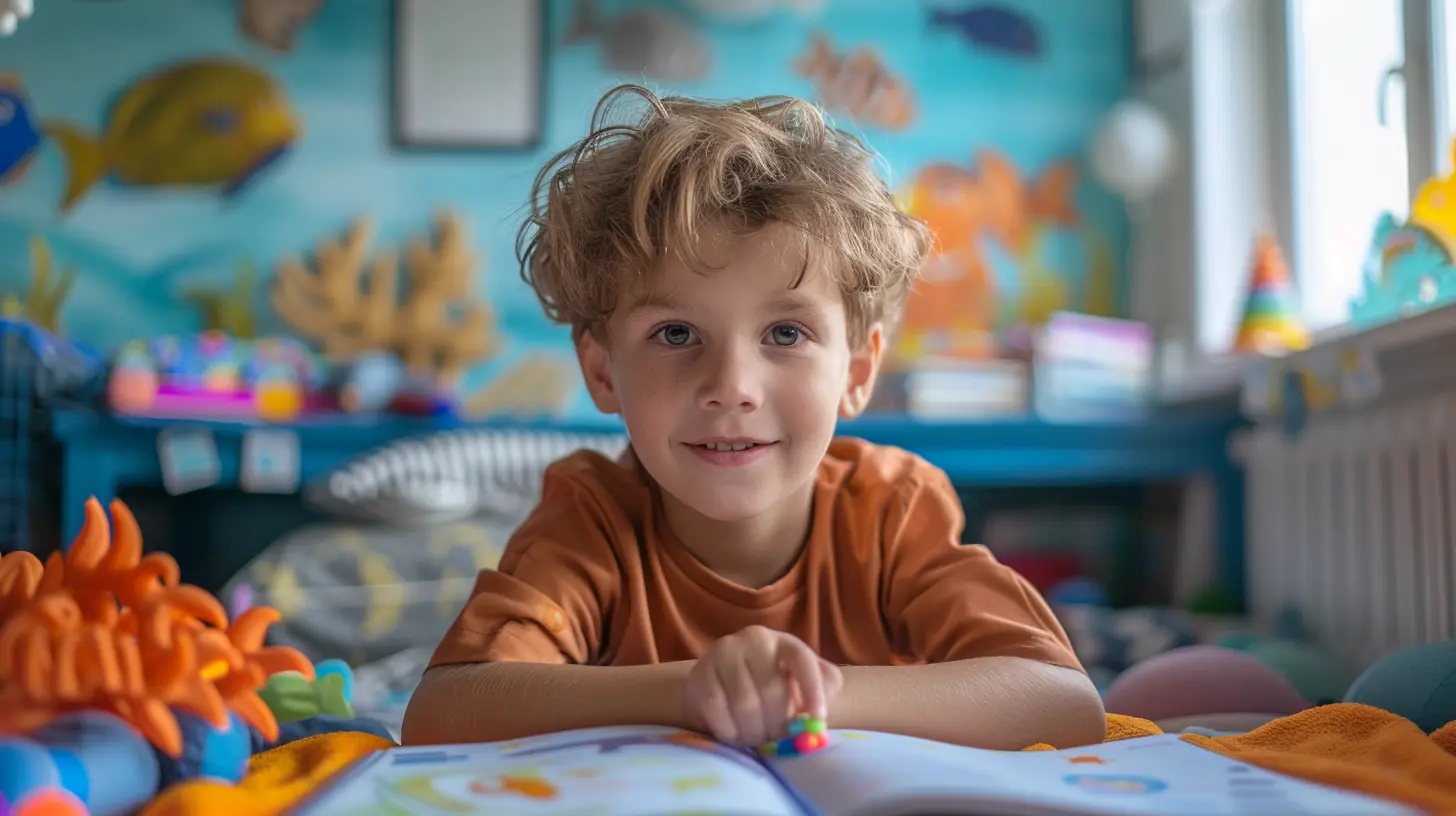Creating a Calm, Sensory-Friendly Environment at Home
9 November 2025
Let’s face it—life at home can get loud, busy, and at times, downright overwhelming. Between work-from-home chaos, kids being kids, and the never-ending to-do list, calm can seem like a far-off dream. But here’s the good news: creating a calm, sensory-friendly environment at home isn't just possible, it's totally doable. And not only will your kids benefit, but so will you.
In this post, we’re diving into how to turn your home into a cozy, calming retreat where everyone—especially children with sensory sensitivities—can feel grounded, safe, and at peace.
Why a Sensory-Friendly Environment Matters
Before we jump into the how, let’s talk about the why.Children (and adults too) are constantly taking in information—sights, sounds, smells, textures, and more. For some kiddos, especially those with sensory processing challenges (think autism, ADHD, or anxiety), the sensory input of everyday life can be too much.
Ever notice your child cover their ears when the vacuum's on? Or melt down in a brightly lit store? That’s their sensory system being overloaded.
A well-thought-out, sensory-friendly home can lower stress, improve mood, boost focus, and help kids self-regulate. Pretty powerful stuff, right?
Start with a Sensory Audit
First things first—take a walk around your home and really notice the space. Ask yourself:- Is this room too bright?
- Are there loud or unpredictable sounds?
- Is there clutter?
- How does the space make me feel?
You don’t need to overhaul your whole home. Sometimes, small tweaks make a huge difference. Once you’ve got a sense of what’s working (and what’s not), you're ready to start making changes.
Sensory Basics: The 7 Senses (Yes, Seven!)
Most of us learned about five senses—sight, sound, smell, taste, and touch. But there are two more that are crucial when creating a sensory-friendly space:- Vestibular (balance and movement)
- Proprioception (body awareness)
Each sense plays a big role in how we interact with the world. When designing your home environment, think about what stimulates or soothes each one.
Create a Calm Color Palette
Let’s talk color—because what surrounds us can seriously affect how we feel.- Stick to soft, muted colors like gentle blues, greens, creams, and grays.
- Avoid high-contrast patterns or overly bright decor in main spaces.
- If your child loves a certain color, weave it into their personal space.
Think of color like music. Loud colors create noise. Soft tones? They whisper calm.
Light It Right
Lighting can be a game-changer. Harsh overhead lights can create glare and discomfort, especially for light-sensitive kids.Tips for sensory-smart lighting:
- Use natural light as much as possible. Open blinds during the day.- Swap out fluorescent bulbs for warm, soft-white options.
- Add adjustable lamps, string lights, or even salt lamps for soft ambiance.
- Consider blackout curtains in bedrooms to help with sleep.
Pro tip: dimmable lights are your BFF for setting the mood.
Sound Soothing Strategies
Noise is a big trigger for sensory overload. That buzzing fridge, barking dog, or loud TV can send sensitive kids into a tailspin.Try these sound-friendly fixes:
- Use noise-canceling machines or white noise.- Add rugs, curtains, or wall hangings to absorb sound.
- Set “quiet times” during the day with soft background music.
- Create a quiet corner where kids can retreat when needed.
You’d be surprised how much peace you can create just by softening the noise.
Texture Talk: Touch Matters
From scratchy tags on clothes to rough carpets, textures can either comfort or irritate a sensory-sensitive child.To make your home a texture-friendly zone:
- Offer a variety of soft blankets and cushions in cozy corners.- Let kids choose their favorite textures for bedding and clothes.
- Incorporate sensory bins with materials like rice, beans, or kinetic sand.
- Avoid scratchy rugs or rough furniture fabrics.
Let your home be a place where kids can feel, well, at home—in every sense.
Smell: The Invisible Influencer
Scents are powerful. They can instantly calm or alert our brains. But for some kids, certain smells (yes, even that “clean linen” candle) can feel overwhelming.Keep scents soothing:
- Try essential oils (lavender, chamomile, or vanilla are usually safe bets).- Skip strong air fresheners and stick with light, natural smells.
- Keep garbage areas clean and ventilated.
- Use baking soda in places where odors build up.
Bottom line: when your home smells peaceful, it feels peaceful.
Movement and Body Awareness
These two lesser-known senses—vestibular and proprioception—are especially important for sensory regulation.Here’s how to support them at home:
- Set up a swing or hammock chair indoors.- Use rocking chairs or balance balls for sitting.
- Keep weighted blankets or lap pads nearby for calming deep pressure.
- Let kids jump, crash, swing, or spin in a safe area (trampolines, crash mats, etc.).
Movement helps kids regulate their emotions. Letting them move their bodies isn’t a break—it’s therapy.
Designate a Sensory Retreat Zone
Every home needs a calm-down corner. No fancy equipment required—just a cozy, quiet spot where your child (or you!) can go to reset.Think soft, safe, and personal:
- Teepee tent or canopy- Pillows, blankets, and bean bags
- Books or fidget toys
- Dim lights or twinkle lights
- Noise-canceling headphones
This space is a lifesaver during meltdowns or overwhelming moments. Give it a nickname like "the chill zone" or "calm cave" to make it fun.
Keep It Clutter-Free
Clutter equals chaos—for the eyes and the brain. A cluttered space can make kids feel more anxious and less in control.Simple decluttering hacks:
- Use closed storage bins for toys and supplies.- Limit what's out on shelves.
- Have a quick 10-minute clean-up routine each day.
- Get kids involved in tidying, using visuals or checklists.
Less stuff = more calm. Think: clear space, clear mind.
Routines and Rhythm
Creating a sensory-friendly home isn’t just about stuff—it’s also about structure. Predictable routines help kids feel safe and in control.- Keep meal, bedtime, and play routines consistent.
- Use visual schedules to guide younger children.
- Add calming transitions like stretching, music, or deep breaths.
When life flows with rhythm, we all feel more balanced.
Tech Time and Screen Sensitivity
Let’s be real—screens aren’t going anywhere. But too much blue light and fast-paced visuals can rev up sensitive brains.Manage screen time gently:
- Use blue-light filters or wear blue-light glasses.- Limit high-stim apps and shows before bed.
- Create screen-free zones (like the dinner table or bedrooms).
- Encourage breaks with offline sensory-friendly activities.
It’s not about banning screens—it’s about finding balance.
Involve Your Child
You know what helps the most? Letting your child help create the space.Ask them:
- What colors do you like?
- What makes you feel calm?
- Which textures feel good to touch?
Helping them be part of the process builds buy-in and gives them a sense of control.
Keep It Real
Look, we’re not aiming for perfection. A sensory-friendly home doesn’t mean silent, spotless, or sterile.It means your child feels safe, seen, and supported. It means you can breathe a little easier knowing your home is a soft place to land after a hard day.
So take it one room at a time. One sense at a time. One day at a time.
You've got this.
Wrapping It Up
Creating a calm, sensory-friendly environment at home isn’t about trendy decor or expensive gadgets. It’s about tuning in to the little things—light, sound, texture, movement—that affect how we all feel.Whether your child has specific sensory needs or just needs a peaceful space to unwind, these changes can foster focus, reduce meltdowns, and promote emotional well-being.
Remember, even the simplest shift—like dimming the lights or softening your color scheme—can spark big calm.
Give your home the same care you give your kids: gentle, thoughtful, and full of love.
all images in this post were generated using AI tools
Category:
Special NeedsAuthor:

Noah Sawyer
Discussion
rate this article
1 comments
Natalia McWilliams
Creating a sensory-friendly home fosters a peaceful atmosphere that supports children's emotional well-being. Simple adjustments like dim lighting, soft textures, and calming scents can significantly enhance a child's comfort and focus.
November 9, 2025 at 4:21 AM

Noah Sawyer
Thank you for highlighting the importance of a sensory-friendly home! Your suggestions on dim lighting, soft textures, and calming scents are excellent ways to enhance emotional well-being and focus for children.


